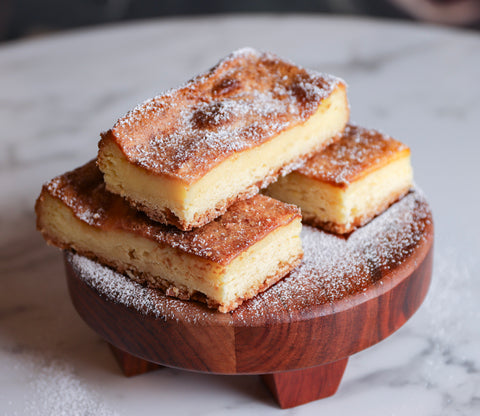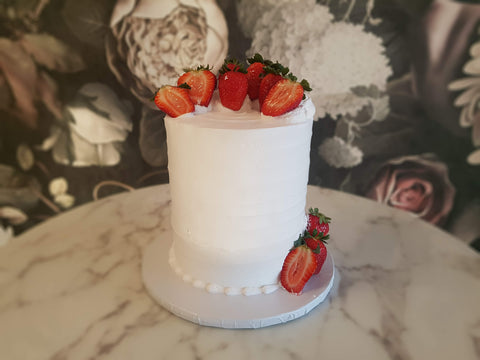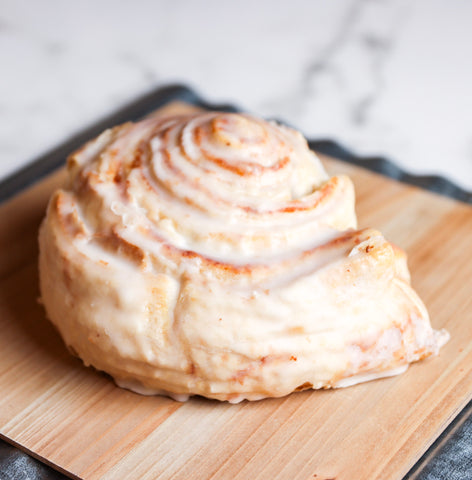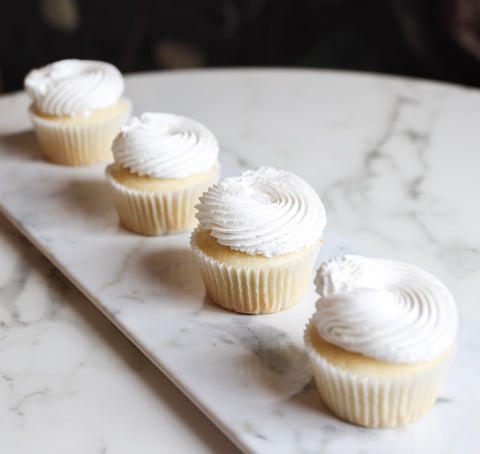TOP 9 Dietary Choices and Restrictions Bakeries are Asked About
Bakeries today operate in a diverse culinary landscape where catering to various dietary preferences and allergies has become not just a niche but a necessity. Understanding and accommodating these dietary restrictions is crucial for bakeries aiming to provide inclusive and enjoyable experiences for all customers. Here's a comprehensive exploration of some of the most prevalent dietary preferences and allergies influencing our bakery offerings.
**1. Gluten-Free Options:**
Gluten-free diets have gained immense popularity, driven by those with celiac disease or gluten sensitivity. Bakeries now offer an array of gluten-free alternatives using ingredients like rice flour, almond flour, and tapioca starch. From cakes and cookies to bread and pastries, these gluten-free options ensure that those with gluten-related concerns can still indulge in the pleasures of baked goods.

**2. Vegan Delights:**
Veganism, both a dietary and lifestyle choice, eliminates all animal products, including dairy and eggs. Vegan baking has evolved significantly, with creative substitutes like plant-based milk, flaxseeds, and applesauce replacing traditional ingredients. Vegan cookies, cakes, and even croissants have become staples in bakeries, appealing to a growing community of conscious consumers. Consumers might want to take note of the difference between "plant-based" and "vegan" labels on their treats. Most items processed have come into contamination or have been manufactured with animal or animal byproducts. Granulated sugar for example, contain animal bone elements. Bakeries that use this ingredient will label their product to be "plant-based" rather than the very strict "vegan" label.
**3. Soy-Free Alternatives:**
Soy allergies have gone up in prevalence, prompting bakeries to seek soy-free alternatives for those affected. In soy-free baking, ingredients like coconut or almond milk are used instead of soy milk, and various oil or butter alternatives replace soy-based products, allowing individuals with soy allergies to savor a diverse range of baked treats. Soy is one of the most sneaky ingredient that pops up in the most basic sub-ingredient from manufacturing. If you look closer, you'll be surprised at how it is a part of every single consumable food in your home. Butter for example is NOT soy free. There is currently only one popular brand of butter product accessible to consumers that is soy free. How crazy is that?
**4. Dairy-Free Delicacies:**
Dairy-free options cater to lactose-intolerant individuals and those adhering to a dairy-free diet. Almond, coconut, and soy milk often substitute traditional dairy, ensuring that cakes, cookies, and pastries remain creamy and flavorful. Dairy-free chocolate and butter alternatives further expand the repertoire of indulgent, lactose-free offerings.

**5. Egg-Free Alternatives:**
Egg allergies and vegan preferences drive the demand for egg-free baked goods. Innovative replacements like applesauce, mashed bananas, or commercial egg replacers allow bakeries to create moist and fluffy cakes and cookies without compromising on flavor or texture. Egg-free options are crucial for inclusivity in bakery selections.
**6. Peanut-Free and Nut-Free Zones:**
Peanut and tree nut allergies are among the most severe food allergies. Bakeries often establish peanut-free or nut-free zones to protect customers with these allergies. Meticulous ingredient sourcing, separate preparation areas, and clear labeling are essential in ensuring the safety of those with nut allergies.

**7. Sugar-Free Selections:** With the rising awareness of the impact of excessive sugar consumption on health, sugar-free options have become increasingly sought after. For those with diabetes or simply looking to reduce their sugar intake, bakeries now offer a range of sugar-free alternatives. Natural sweeteners like stevia, monk fruit, or erythritol are used to craft cakes, cookies, and pastries that are not only delicious but also cater to individuals seeking a lower-sugar lifestyle. These sugar-free selections provide a guilt-free indulgence, proving that sweetness can still be savored without compromising on health-conscious choices.

**8. Sesame-Free Choices:**
Sesame allergies are on the rise, leading bakeries to be mindful of ingredient sourcing. Clear labeling and offering sesame-free options are essential to accommodate those with sesame allergies, ensuring that a diverse range of customers can confidently enjoy baked treats without worry.
**9. Wheat-Free Alternatives:**
Wheat allergies or sensitivities necessitate wheat-free alternatives in bakery products. Flours like rice flour, almond flour, or gluten-free flour blends are used to create wheat-free versions of bread, cakes, and pastries, allowing individuals with wheat-related concerns to partake in the joy of baked goods.
Our bakery continues to experiment on the many ways we can serve our diverse dessert needs. Our rules of thumb, it's got to be simple, made with ingredients that do not pass 3 syllables, shelf stable enough for our families to consume in a matter of days without it affecting taste and texture so much and something we ourselves would actually want to eat (and we are very picky with our treats). It is not easy to please us and our palettes, so please bear with us. We will find those recipes eventually!
For now, we can offer dairy free, sugar free, vegan, and gluten free. It's trickier when we mix restrictions together such as gluten and egg free- don't worry, we will get there!
Rolling in Dough- always in the kitchen with 10 million experimental shenanigans.



